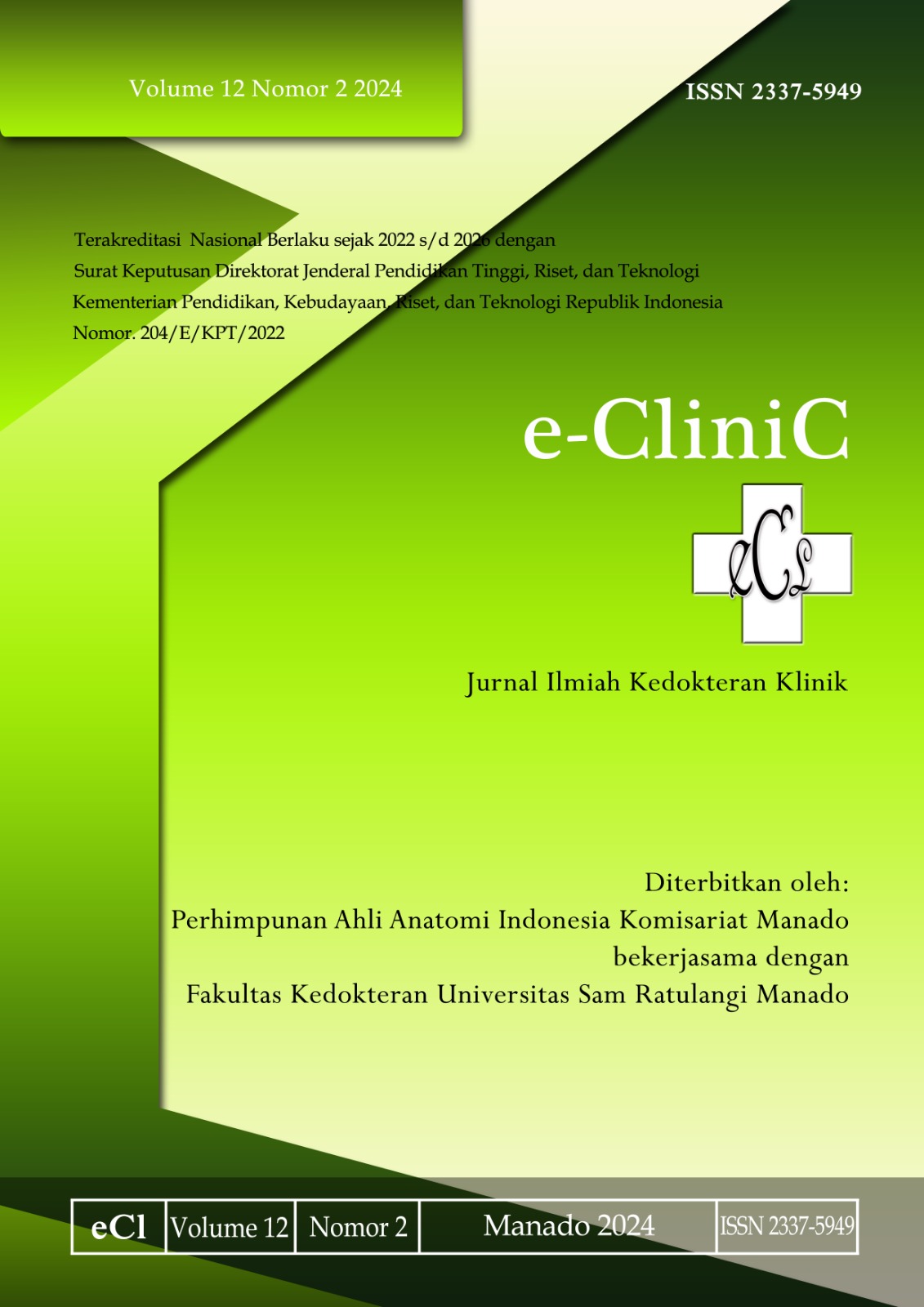Endovascular Fistula Salvage for Preserving Arteriovenous Fistula Failure in Haemodialysis Patient: Tertiary Referral Hospital, a Single-Centre Experience
DOI:
https://doi.org/10.35790/ecl.v12i2.46644Abstract
Abstract: Efficacy of endovascular intervention for the preservation of failing accesses is very important in hemodialysis patients. This study aimed to determine the efficacy of endovascular balloon angioplasty in preserving the patency of hemodialysis arteriovenous fistula (AVF) failure. This was a retrospective study of hemodialysis patients who received endovascular intervention due to access difficulties. A single-center study was created between January 2022 and June 2022. Fistulography was conducted on patients suspected of having access stenosis, and balloon angioplasty was performed in the same setting if stenosis of 50% was confirmed. Post-operative complications and access restenosis or failure were monitored. The results obtained 69 patients with hemodialysis access failure due to AVF stenosis, occlusion, and thrombosis that were admitted or referred to our hospital. The majority of patients were 40-60 years (50.7%); 88.4% patients were male and 11.6% were female, with a mean age of 56.3±11.6 (range, 18–77). The sites of AVF failure were brachiocephalic (81.1%) and radiocephalic (18.9%). There was no complication recorded. The procedure succes rate was 81.1%. In conclusion, endovascular balloon angioplasty is effective in restoring hemodialysis access patency. Recurrence is common, and interventions must be repeated. Keeping access open can save lives. Percutaneous transluminal angioplasty (PTA) can be used to achieve safely and successfully repair arteriovenous fistulas failure.
Keywords: angioplasty; arteriovenous fistula; arteriovenous graft; hemodialysis
References
Canaud B, Ponce P, Teresa Parisotto M, Busink E, Apel C, Rammo J, et al. Vascular access management for haemodialysis: a value-based approach from NephroCare experience. Vascular Access Surgery - Tips and Tricks [Internet]. 2019 Apr 24; Available from: http://dx.doi.org/10.5772/intechopen. 84987
Santoro D, Benedetto F, Mondello P, Pipitò N, Barillà D, Spinelli F, Ricciardi CA, Cernaro V, Buemi M. Vascular access for hemodialysis: current perspectives. Int J Nephrol Renovasc Dis. 2014;7:281-94. Doi: 10.2147/IJNRD.S46643
Lawson JH, Niklason LE, Roy-Chaudhury P. Challenges and novel therapies for vascular access in haemodialysis. Nat Rev Nephrol. 2020;16(10):586-602. Doi: 10.1038/s41581-020-0333-2
Duque JC, Tabbara M, Martinez L, Cardona J, Vazquez-Padron RI, Salman LH. Dialysis arteriovenous fistula failure and angioplasty: intimal hyperplasia and other causes of access failure. Am J Kidney Dis. 2017;69(1):147-51. Doi: 10.1053/j.ajkd.2016.08.025
Tan RY, Pang SC, Teh SP, Ng CY, Lee KG, Foo MWY, et al. Outcomes of endovascular salvage of clotted arteriovenous access and predictors of patency after thrombectomy. J Vasc Surg. 2020 ;71(4):1333-1339. Doi: 10.1016/j.jvs.2019.07.056.
Manninen IH, Kaukanen E, Mäkinen K, Karhapää P. Endovascular salvage of nonmaturing autogenous hemodialysis fistulas: comparison with endovascular therapy of failing mature fistulas. J Vasc Interv Radiol. 2008;19(6):870-6. Doi: 10.1016/j.jvir.2008.02.024. 10.1016/j.jvir.2008.02.024
Liu W, Wu M, Wang X, Huang XK, Cai WJ, Ding TY, et al. Recanalization of thrombosed aneurysmal hemodialysis arterovenous fistulas using a hybrid technique based on data from a single center. BMC Nephrol. 2022;23(1):185. Doi: 10.1186/s12882-022-02820-9
Hsu YH, Yen YC, Lin YC, Sung LC. Antiplatelet agents maintain arteriovenous fistula and graft function in patients receiving hemodialysis: a nationwide case-control study. PLoS One. 2018;13(10):e0206011. Doi: 10.1371/journal.pone.0206011.
Salako AA, Badmus TA, Igbokwe MC, David RA, Laoye A, Akinbola IA, et al. Experience with arteriovenous fistula creation for maintenance hemodialysis in a tertiary hospital in South-Western Nigeria. Saudi J Kidney Dis Transpl. 2018;29(4):924-9. Doi: 10.4103/1319-2442.239628
Yadav N, Gamanagatti S, Sharma R, Aggarwal SK, Bansal VK, Kandasamy D, et al. Outcomes of endovascular therapy for salvage of hemodialysis arteriovenous fistulae. Journal of Clinical Interventional Radiology (JSVIR). 2021;05(03):142-9. Doi: 10.1055/s-0041-1728983
Franco RP, Chula DC, de Alcantara MT, Rebolho EC, Melani ARA, Riella MC. Salvage of thrombosed arteriovenous fistulae of patients on hemodialysis: report on the experience of a Brazilian center. Braz J Nephrol [Internet]. 2018;40(4):351-9. Available from: https://doi.org/10.1590/2175-8239-jbn-2018-0036
Downloads
Published
How to Cite
Issue
Section
License
Copyright (c) 2024 Billy Karundeng, Richard Sumangkut, Djony Tjandra, Yuansun Khosama, Tomi Juliandi

This work is licensed under a Creative Commons Attribution-NonCommercial 4.0 International License.
COPYRIGHT
Authors who publish with this journal agree to the following terms:
Authors hold their copyright and grant this journal the privilege of first publication, with the work simultaneously licensed under a Creative Commons Attribution License that permits others to impart the work with an acknowledgment of the work's origin and initial publication by this journal.
Authors can enter into separate or additional contractual arrangements for the non-exclusive distribution of the journal's published version of the work (for example, post it to an institutional repository or publish it in a book), with an acknowledgment of its underlying publication in this journal.
Authors are permitted and encouraged to post their work online (for example, in institutional repositories or on their website) as it can lead to productive exchanges, as well as earlier and greater citation of the published work (See The Effect of Open Access).







